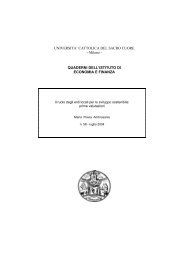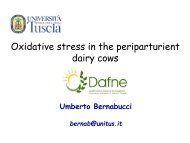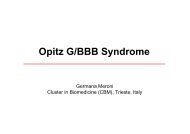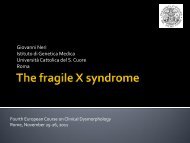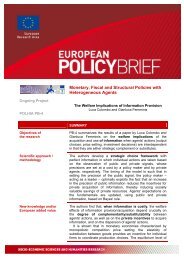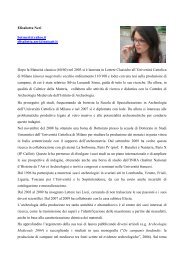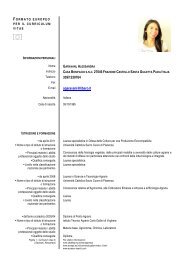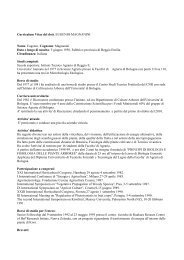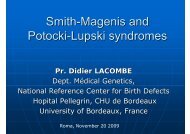UNIVERSITA' CATTOLICA DEL SACRO CUORE - Milano - Istituti
UNIVERSITA' CATTOLICA DEL SACRO CUORE - Milano - Istituti
UNIVERSITA' CATTOLICA DEL SACRO CUORE - Milano - Istituti
You also want an ePaper? Increase the reach of your titles
YUMPU automatically turns print PDFs into web optimized ePapers that Google loves.
Preserving the vertically integrated structure of an incumbent network operator<br />
competing in the provision of liberalized Tlc services implies a major role for<br />
access regulation and antitrust enforcement; for this reason, it is often considered<br />
a behavioral approach, in contrast with the structural nature of vertical ownership<br />
or operational separation. The debate around the most appropriate vertical<br />
structure for fixed Tlc industry is quite lively, since both options have several<br />
advantages and drawbacks which make it almost impossible to determine an<br />
objective hierarchy; further, country-specific and market-specific factors may<br />
reverse the relative superiority of an alternative over the other one.<br />
From the point of view of the social planner, vertical integration in network<br />
industries such as Tlc may result beneficial in terms of efficiency, assuming the<br />
incumbent does not engage in anticompetitive behavior. In fact, retaining a<br />
monopolistic structure in the upstream network-related activities may enhance the<br />
exploitation of economies of scale, especially at the level of the local loop. On the<br />
other hand, the regulator must guarantee that network effects are not forgone by<br />
the refusal to interconnect, since the incumbent find it rational to deny access to<br />
the network to competitors. Furthermore, vertical integration ensures that<br />
economies of scope are exploited: scope economies may arise because of the<br />
removal of potential hold-up problems with reference to relationship-specific<br />
investment in infrastructures; further, they may improve information availability,<br />
thus reducing the scope for free-riding and by consequence enhancing the<br />
efficiency of incentive contracts. Another possible source of economies from<br />
integration is related to the elimination of double marginalization problems due to<br />
the exercise of market power at subsequent levels of the industry, or the<br />
(downstream) use of inefficient input mix due to imperfect competition in an input<br />
market.<br />
Under a dynamic perspective 19 , vertical integration and the related third party<br />
access regulation is also beneficial since it should induce efficient investments in<br />
infrastructure by entrants, provided that access charges are set to the socially<br />
optimal level 20 . Furthermore, optimal incentives to invest in technological<br />
innovation are preserved, because of the long-run competition between networks.<br />
Under this setting, the most appropriate policy strategy consists in the regulation<br />
of (mandated) access conditions: accounting separation should provide the<br />
regulator with the required information to fix access tariffs and conditions on a<br />
fair, transparent, non-discriminatory and cost-oriented basis, leaving ex post<br />
competition law a supervision role. This is indeed the orientation of the European<br />
19 Before turning the attention to dynamic advantages, from a static point of view it should not be<br />
omitted that vertical integration avoids one-shot costs arising from separation. However, this<br />
should be considered more as a disadvantage of structural separation rather than a genuine<br />
advantage of integration.<br />
20 As it will be soon demonstrated, information asymmetries between the Regulator and the<br />
incumbent make it almost impossible to set such optimal access charge, potentially giving rise to<br />
regulatory failures which may prove very costly for society. For a general discussion of regulation<br />
under asymmetric information settings the reader could refer to MARZI et al. [2001], ch. V and<br />
Appendice 3., and to CHURCH AND WARE [2000], ch. 26.<br />
9




